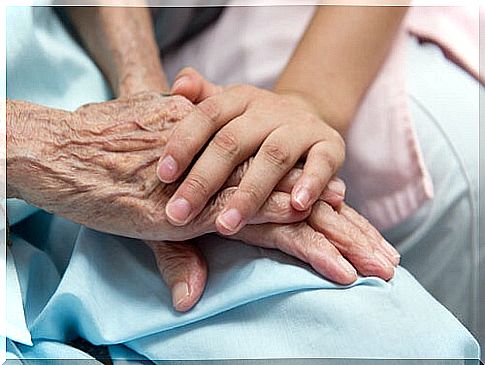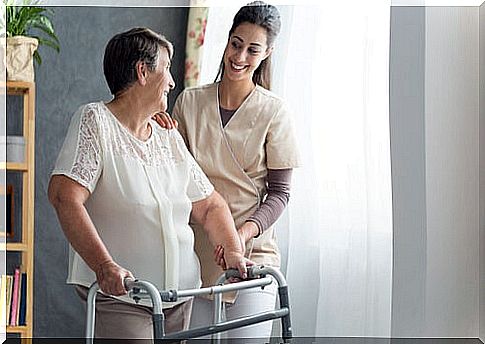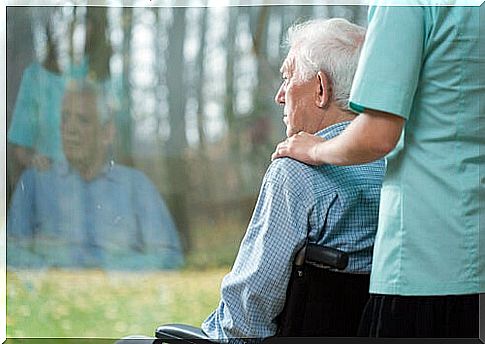Dependency Law: Characteristics, Benefits And Services

In Spain, according to IMSERSO (2019) there is a rate of people in a situation of dependency of 2.7%. Around 1,307,558 people have a recognized dependency situation. Considering the data, it is still necessary to promote and improve the dependency law. It should be noted that, at present, it is informal caregivers who largely support this system,
The misnamed “Dependency Law” has the challenge of meeting the needs of people who require support to develop essential activities of daily life. Therefore, the ultimate goal is for them to achieve greater personal autonomy and fully exercise their rights.
According to Law 39/2006 of December 14, on the promotion of personal autonomy and care for people in a situation of dependency, we could define “dependency” as: a permanent state in which people find themselves who, for reasons derived from age, illness or disability, and linked to the lack or loss of physical, mental and intellectual or sensory autonomy, require the attention of another person or persons or important aids to carry out basic activities of daily life, or in the case of people with intellectual disabilities or mental illness, other supports for their personal autonomy.

Some of the reasons why the dependency ratio has increased:
- First, the increase in the population over 65 years of age.
- Also, the aging of aging. That is, the increase in the population over 80 years of age.
- Another reason is dependency for reasons of illness and other causes of disability or limitation. In recent years, the number of people who have survived chronic diseases and congenital disorders has increased. In addition, survival due to road and work accidents has also increased.
Background of the Dependency Law
Before the approval of the Dependency Law, other laws and strategies were put in place in order to assist people in this situation. Some of his references were:
- Law of Social Integration of the Disabled (LISMI) of 1982.
- General Health Law of 1986.
- Concerted Plan for the Development of Basic Benefits of Social Services of Local Communities of 1988.
- Non-contributory pensions law of 1990.
- 1991-2000 State Gerontological Plan.
- General Law of Social Security of 1994.
- I United Nations World Assembly on Aging held in Spain in 2002.
- Law of Cohesion and Quality of the National Health System of 2003.
- 2005 Dependency White Paper.
Degrees of Dependency Law
Initially, when carrying out dependency assessments, a division was made into degrees and these degrees could be specified in levels. In 2012 the levels were eliminated, leaving only the grades as a criterion in the classification.
Grade I
Moderate dependence. The person in a dependent situation needs help to carry out several basic activities of daily life at least once a day, or to have intermittent or limited support needs for their personal autonomy.
Grade II
Severe dependency. In this case, the person needs support to carry out several basic activities of daily life two or three times a day. It does not require the ongoing support of a caregiver, but may need extensive support for personal autonomy.
Grade III
Great dependency. The person needs help to perform various basic activities of daily life several times a day. In this case, due to the total loss of physical, mental, intellectual or sensory autonomy, they need the indispensable and continuous support of another person or they have generalized support needs for their personal autonomy.
Instruments for the assessment of dependency
As a result of the impulse of the Dependency Law, an instrument was created with which to assess dependency. In 2011 the Dependency Assessment Scale (BVD) was approved. This instrument assesses the person’s ability to carry out the basic activities of daily life, as well as the degree of supervision and support required from another person for these tasks.
The professional who performs these assessments relies on health reports issued by doctors and will take into account the characteristics of the environment where the person carries out their day-to-day life. All the data collected will be used to prepare a social report and, subsequently, an individual care program (PIA).

Benefits and services of the dependency law
Likewise, with the drafting of this law, a catalog of services and benefits was also created. These centers and services must be public or private, duly accredited.
Services
- For the prevention of dependency situations and those for the promotion of personal autonomy.
- Telecare service.
- Home help. Destined to the attention of the needs of the home and / or the personal cares.
- Day and night center service. These centers can be for the elderly, for those under 65, specialized care and night-only centers.
- Residential Care. These centers can be for elderly people in a situation of dependency or for people in a situation of dependency due to disability.
Benefits
- Economic benefit linked to the service : this benefit is a monetary contribution for the enjoyment of a service that is not available at a certain time.
- PECEF or economic benefit for care in the family environment : this is granted when someone from the user’s environment is the main caregiver.
- Economic benefit of personal assistance : promotion of the autonomy of people in a situation of dependency. It is also intended to facilitate access to education and work.
In conclusion, although an attempt has been made to provide the system with great services and benefits, we still have a long way to go. And above all, we have non-professional caregivers to thank for the great job they do.









